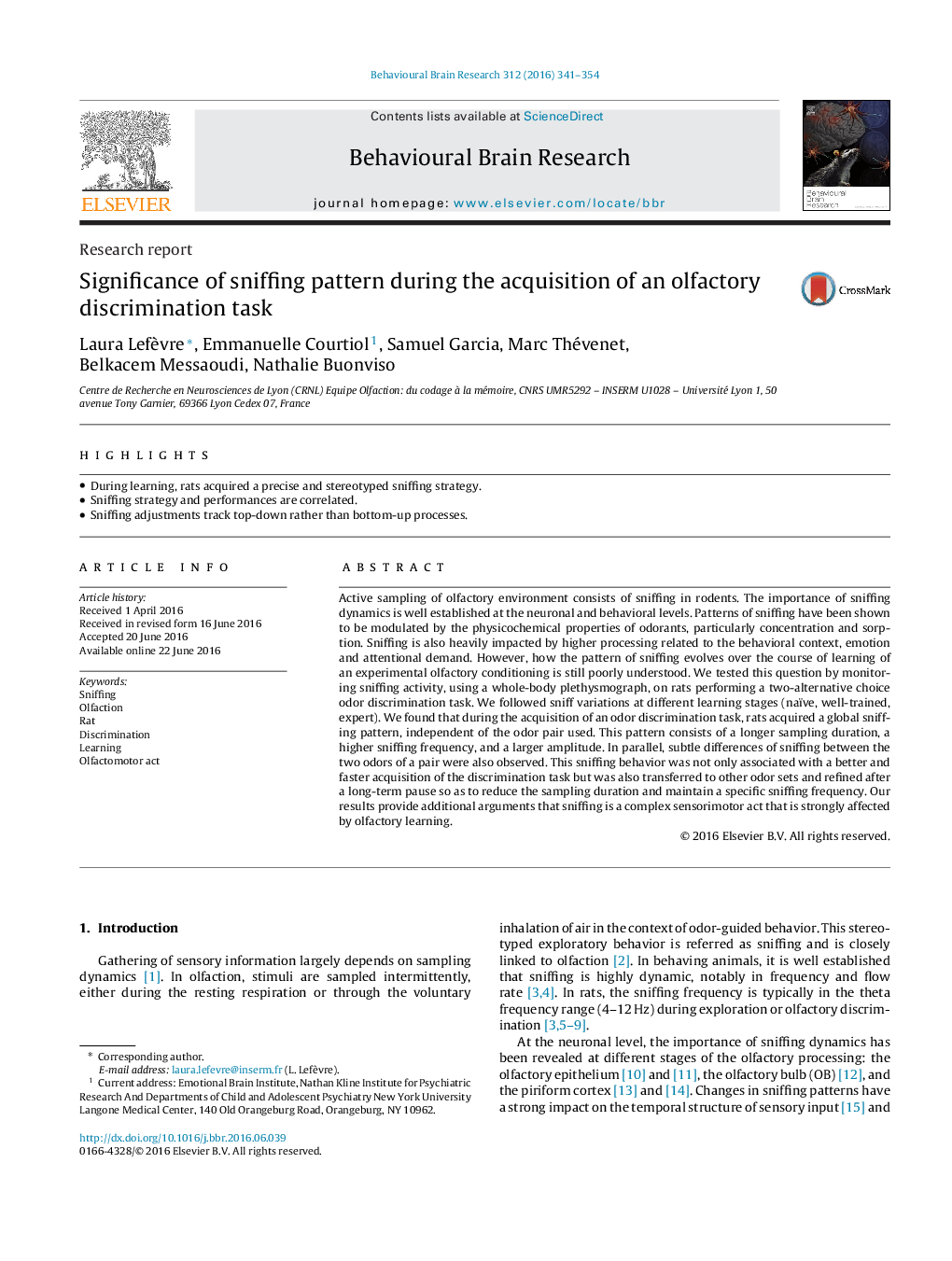| Article ID | Journal | Published Year | Pages | File Type |
|---|---|---|---|---|
| 4312086 | Behavioural Brain Research | 2016 | 14 Pages |
•During learning, rats acquired a precise and stereotyped sniffing strategy.•Sniffing strategy and performances are correlated.•Sniffing adjustments track top-down rather than bottom-up processes.
Active sampling of olfactory environment consists of sniffing in rodents. The importance of sniffing dynamics is well established at the neuronal and behavioral levels. Patterns of sniffing have been shown to be modulated by the physicochemical properties of odorants, particularly concentration and sorption. Sniffing is also heavily impacted by higher processing related to the behavioral context, emotion and attentional demand. However, how the pattern of sniffing evolves over the course of learning of an experimental olfactory conditioning is still poorly understood. We tested this question by monitoring sniffing activity, using a whole-body plethysmograph, on rats performing a two-alternative choice odor discrimination task. We followed sniff variations at different learning stages (naïve, well-trained, expert). We found that during the acquisition of an odor discrimination task, rats acquired a global sniffing pattern, independent of the odor pair used. This pattern consists of a longer sampling duration, a higher sniffing frequency, and a larger amplitude. In parallel, subtle differences of sniffing between the two odors of a pair were also observed. This sniffing behavior was not only associated with a better and faster acquisition of the discrimination task but was also transferred to other odor sets and refined after a long-term pause so as to reduce the sampling duration and maintain a specific sniffing frequency. Our results provide additional arguments that sniffing is a complex sensorimotor act that is strongly affected by olfactory learning.
